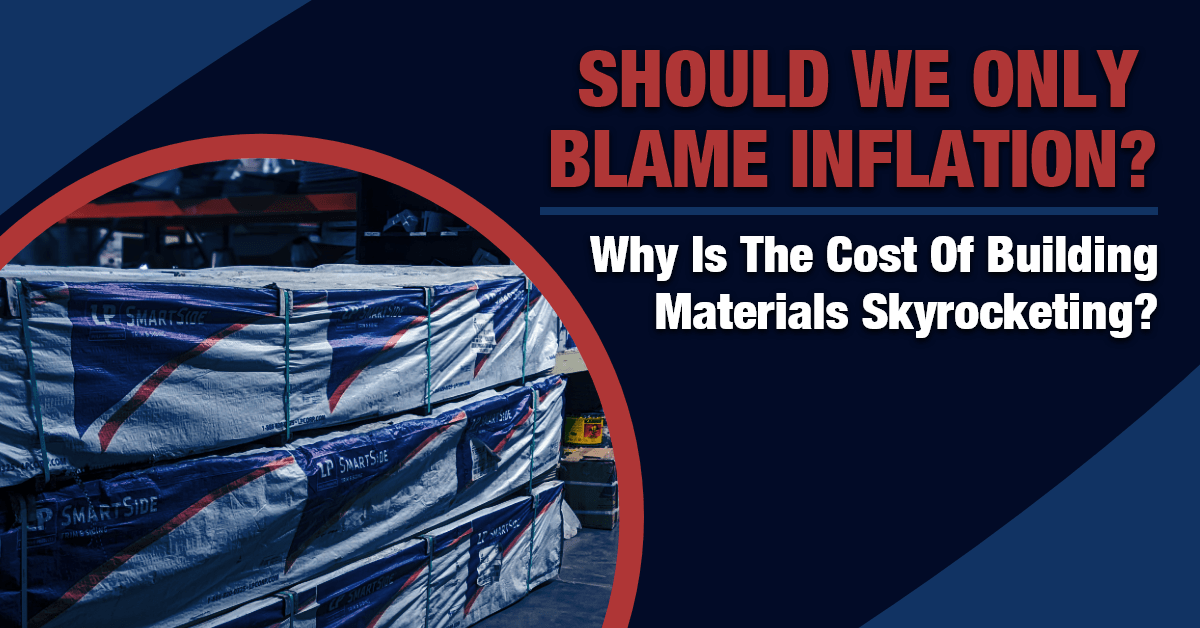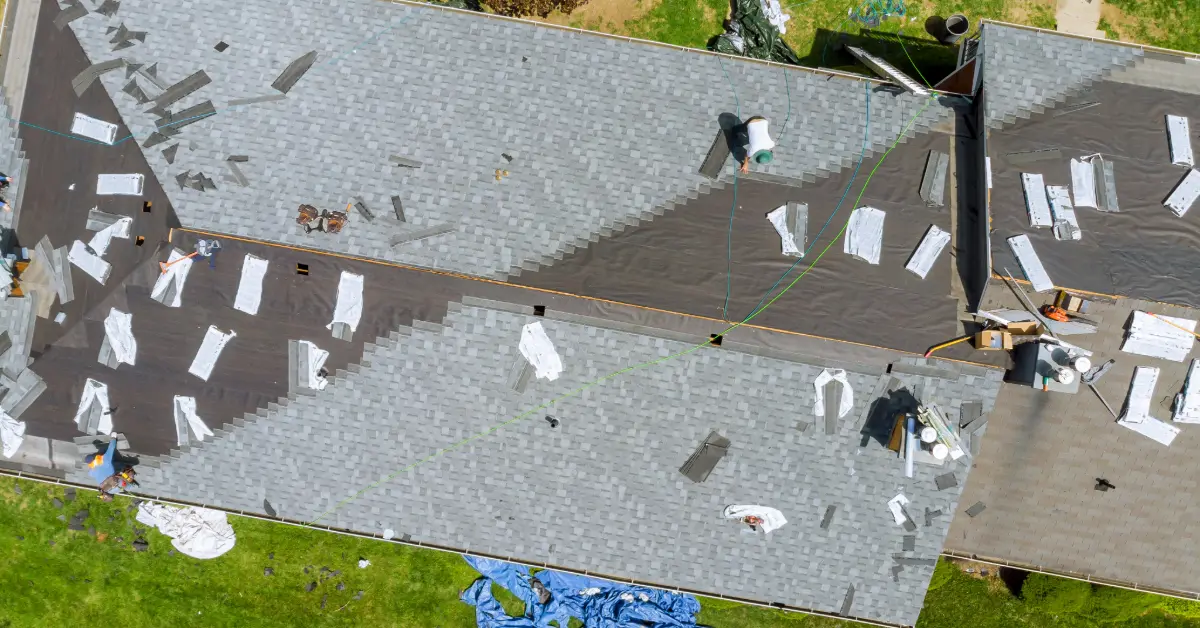“Why has the cost of building materials gone up?” This question is racing in the minds of every homeowner looking to keep their home and roof in great shape. After weathering a global pandemic, you rightly deserve a big break. Unfortunately, that’s not happening.
Currently, the country is grappling with record-breaking inflation wreaking havoc in the building sector. But is inflation the only factor driving the chaos in the building and construction industry? Far from it.
Besides inflation, three other factors are responsible for the skyrocketing cost of building materials. Dig in for insights into how these factors work and why the high prices might last longer.
Damaging Global Pandemic
The Covid-19 pandemic may be in the rearview mirror three years later, but the devastating effects persist. At the height of the outbreak, the government imposed health measures to help contain the disease. These included lockdowns and social distancing measures that saw many businesses close down.
The closures had a catastrophic effect on the building material supply chain. Manufacturers suffered labor shortages since they had to trim their workforce and make do with restricted shifts. Ironically, there was a spiking demand for building materials as most people took this opportunity to upgrade their homes. The projects ranged from roof repair to remodeling bathrooms and kitchens to building decks and playhouses. The increased demand against dwindling supply caused the prices of critical building materials, including steel, lumber, plywood, and cement, to go through the roof.
Housing-specific issues, not inflation, drive the rising cost of lumber and plywood. Unable to go on vacation, homeowners spent most of their downtime building playpens, she-sheds, decks, and other DIY projects. Mortgage rates dropped to an all-time low at the onset of the pandemic, triggering a buying frenzy. Contractors raced to meet the growing demand, further fueling the shortage.
Transportation Problems
The Covid-19 containment measures crippled the global supply chain with devastating effects. The lockdowns kept essential freight workers from going to work, infinitely stretching the turnaround times. Every aspect of the transportation sectors—sea, air, rail, and road—was affected.
Lead time for raw materials stretched from weeks to months, causing many manufacturers to lower their production rate. That means they couldn’t keep up with the growing demand, and the market quickly depleted the available stock.
The pandemic also magnified the existing truck driver shortage in the country. Wood milling companies struggled on two fronts during the pandemic – lack of laborers and truck drivers. Without enough truck drivers, they could get their logs from the forest to the mills and transport the finished product to the market.
Other shortages have more recently become an issue because of troubles within the rail sector. Threatened railroad worker strikes and slowdowns affect anything transported by rail throughout the country. The breaks in the global supply chains mean that building material manufacturers had to contend with high production costs. They have passed the additional cost to you, the consumer.
Rising Fuel Costs
Recovering from the pandemic containment measures has led to surging energy demands that have driven fuel prices through the roof. That means the global fuel market needed help meeting the existing demand long before the conflict in Eastern Europe.
The push to switch to green energy caused drilling companies to lower their production capacity and reduce investments in new wells. This reduction in production all happened against a backdrop of decreased global supply due to political turmoil and natural disasters in major oil-producing countries.
The ongoing conflict between Russia and Ukraine has driven to cost of oil to hit prices that the world hasn’t seen in a decade. There are sanctions against Russian petrochemical products in response to the ongoing conflict. This creates a shortage as world nations scramble for the available stock, skyrocketing fuel prices.
Spiking Inflation
Inflation is a significant issue in the building industry as it leads to sector-wide price hikes. Rising inflation leads to higher costs of building materials, hiring machinery, and other inputs. It puts additional pressure on building companies’ ability to complete projects because it forces them to dig deeper into their pockets.
Inflation is a countrywide increase in the cost of goods and services. It lowers the value of money, forcing you to pay more for every item you purchase. For instance, a hammer that cost $10 in 2021 would cost $12 today. While the quality of the hammer remains unchanged, inflation and currency devaluation led to a 20% price hike.
Worse still, inflation leads to price increases across the board. That means paying more for equipment, building materials, fuel, technology, and even labor. Spiking fuel costs means you’ll incur higher transportation costs and pay higher fees to rent specialized equipment and machinery.
Get the Best Value On Building Materials
Now that you know why the cost of building materials has increased, we hope you’ll make an informed decision when hiring a building contractor. While cost is a significant consideration, getting the cheapest building material or contractor isn’t always advisable. At Straightline Construction, we go the extra mile to bring you quality building materials at affordable costs. Even in the face of the spiraling cost of building materials, we’ll never compromise your home. You can count on us for quality roofing services, accessories, and professional advice.
Contact us today for a free estimate.








